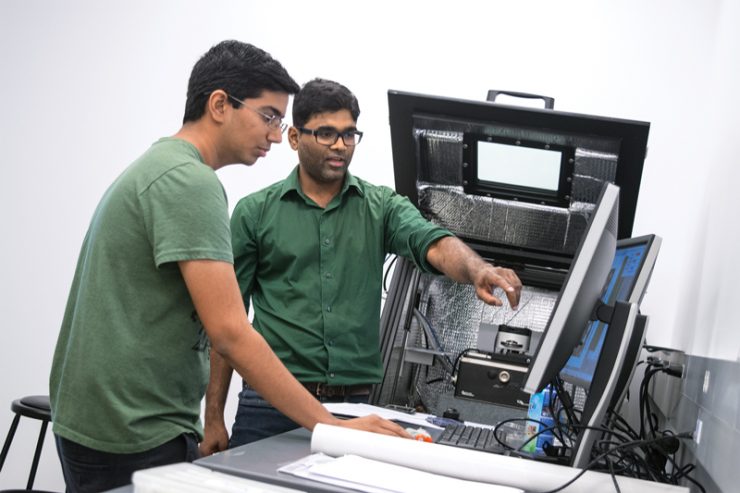Remember your first explorations into microscopic worlds? Perhaps it was in grade school, where a drop of pond water teemed with tiny organisms that made science come alive.
Chapman University researcher Molla Islam, Ph.D., still lives in such a world. Except that now his investigations are magnified to the molecular level.
He and his colleagues are using a new atomic force microscope to study polymers at the nanometric level. It’s just one of the tools advancing research in the recently opened Keck Center for Science and Engineering at Chapman. In this 140,000-square-foot space, students are using advanced equipment for research across a range of fields, from cancer biology to materials science and quantum computing.
The atomic force microscope provides insights into the structural and mechanical properties of materials by taking measurements for three-dimensional high-resolution imaging down to about a billionth of a meter.
The device actually uses force, or feel, rather than optics to help researchers see what otherwise would be a mystery, Islam says. A mind-bogglingly sensitive crystal probe affixed to a cantilever taps the surface of a material, sensing the atomic interactions of particles. What results is a bumpy topographical map of the particles or material.
Examining such small particles and their properties can help drive innovative solutions to global challenges. At Chapman, Andrew Lyon Ph.D., dean of the Schmid College of Science and Technology, and Islam are studying polymer nanoparticles for potential applications as artificial platelets.
The equipment allows the researchers to see how the polymers interact. Are they drawn to each other, or are they repelling? This research could lead to breakthroughs in managing uncontrolled bleeding or building artificial muscle. For more on the team’s research, turn to page 28.
“The AFM is one of the few microscopes that can look directly into the molecular world,” Lyon said. “We no longer infer the shapes, sizes and structures of molecules – we directly observe them.”
Cover Photo: Researcher Molla Islam, right, gets help from high school student Anirudh Sharma as they examine polymers at the nanometric level. Photo by Livi Dom ’20





